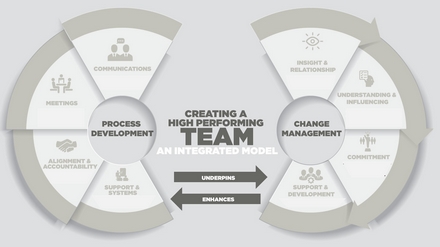
“Natural selection is not a master engineer, but a tinkerer”
Jerry A. Coyne, “Why Evolution is True”
Many of nature’s mistakes are contained in the fossil record, but there are many of nature’s creations that are very effective and have lasted (virtually unchanged) for millions of years (the shark for example).
David Zinger did a 3-year study of Honeybees to distil teaming and organizational dynamics for his ebook Waggle: 39 Ways to improve Human Organizations, Work, and Engagement.
There is a lot we can learn from nature, and Ken Thompson, has codified some principles of bio-teaming:
- Self-Management. Individuals react and collaborate in response to information, not command-and-control orders.
- Nonverbal Communication. Team members do not rely on face-to-face communication but work asynchronously across geographic locations and time zones. Verbal communication is fine, when possible, but not necessary to achieve goals.
- Bias for Action. Team members problem-solve and learn through rapid, evolutionary experimentation and feedback. As individuals, they have hard-wired concrete goals, but no fixed strategies for achieving them. When something works, it’s communicated, reinforced and embedded in the collective set of responses to the next challenge. When something doesn’t work, it simply dies. The key to success is being experimental, not prescriptive.
- Three Dimensions. Team members thrive best when they relate to their fellow team members, their organization as a whole and the external environment. Web-based collaboration technologies (like Slack and its competitors) can support connectivity with all three dimensions—creating more effective team members.

- Motivation and Conflict. Bees, ants, birds and microbes simply react and respond to stimuli—they have no choice in the matter. Human beings are entirely different—they have the power to choose their response in any given situation. There are lots of ways to support individual effectiveness in the workplace of the future: coaching, mentoring, facilitation, mediation, skill building, and much more. Myriad books, programs, methodologies, and consultancies are dedicated to these disciplines—all focused on helping team members make the most effective choices about time, talent, resources and relationships.
- Individuality. One member’s mistake in a beehive or an ant colony doesn’t really matter—there are thousands of peers doing the exact same thing. On a human team, aberrant behavior or gross incompetence is a huge and potentially destructive deal (imagine boarding a commercial airline flight with “pilot” Frank Abegnale, Jr.!). Peer accountability and transparency are crucial to mitigating the risk of individual failure.
- Human Intelligence. As Thompson notes, a principle of biological teams is that complex group behavior can arise from simple individual behavior given sufficient time, scale and feedback loops. Well-coordinated human teams can produce dazzling results even if the individuals aren’t dazzling by themselves. That’s the power of bio-teaming.

Comments on Bio-teaming
Notice that there are no meetings, just for the sake of meeting, or a display of political power. There also does not seem to be a hierarchical command and control structure, but the team is flat, and may just have a leader. Teams work at a distance, and F2F is not necessary, except for very high bandwidth conversations. No one is perfect and we all learn by making mistakes. The critical part is to learn from the mistakes until you have a winning strategy, and then communicate that strategy to other team members.

Although there are plenty of collaboration tools, not all tools can support team interactions in all the dimensions needed. Most tools are two-dimensional, and only allow one or two types of team interactions (usually synchronous, and asynchronous), but that is a very limited view of collaboration, and does not take into account interactions with social media, or AI/bots. Also, teams are more than the sum of the actions of the individual team members. If you have ever worked on a high-performance team, you would have experienced this.
The Challenges of Team Collaboration
Unlike an ant or bee, human behavior is much more complex, so there are more chances for failure (at least for individual team members), but this does not always mean the team itself is a failure, as some team members may have strengths that others do not. In a high-performance team, team members’ strengths tend to make up for others weaknesses, and their strengths also tend to amplify each other.

One of the biggest issues in team collaboration behavior is the fact that most team members have poor collaboration skills, it’s not their fault really, as we learn by imitation, and our examples are not always optimal. Unfortunately, there are not many tools or courses that can help you learn good collaborative behaviors, as many of these are didactic, and collaboration (by nature) is situational.
Convergence of Technologies
It is this area that my startup (TeamSkillsPro.com) is working in, as there are no really good solutions? Unlike ants or bees, whose behavior is instinctual, patterned and consistent, human behaviors are quite often not only complex, but they can also be very hard to change. More effective collaboration is often a question of new skills, and analysis of past interaction patterns, to help predict optimal new ones.

That is the big advantage of humans, we have a choice, and so can change behaviors to fit the situation, whereas instinctual behaviors may not change, and the result is left in the fossil record. For us to evolve past the current collaborative plateau, we may need a metaphorical “hand up” from some of our own creations, or risk being part of the fossil record ourselves.
